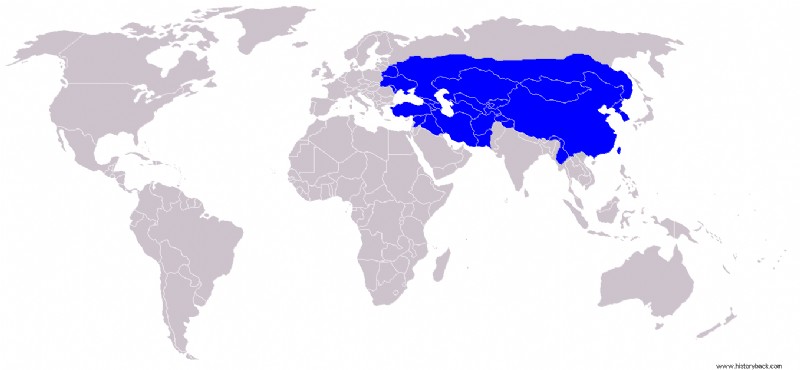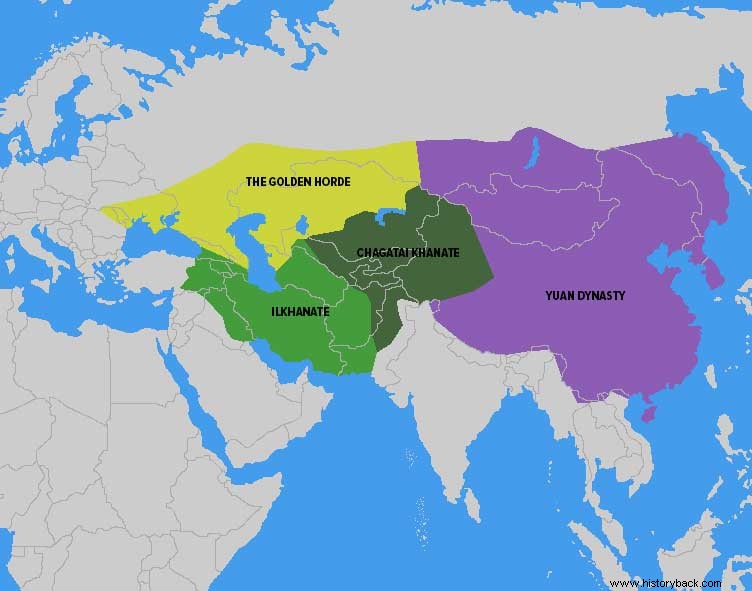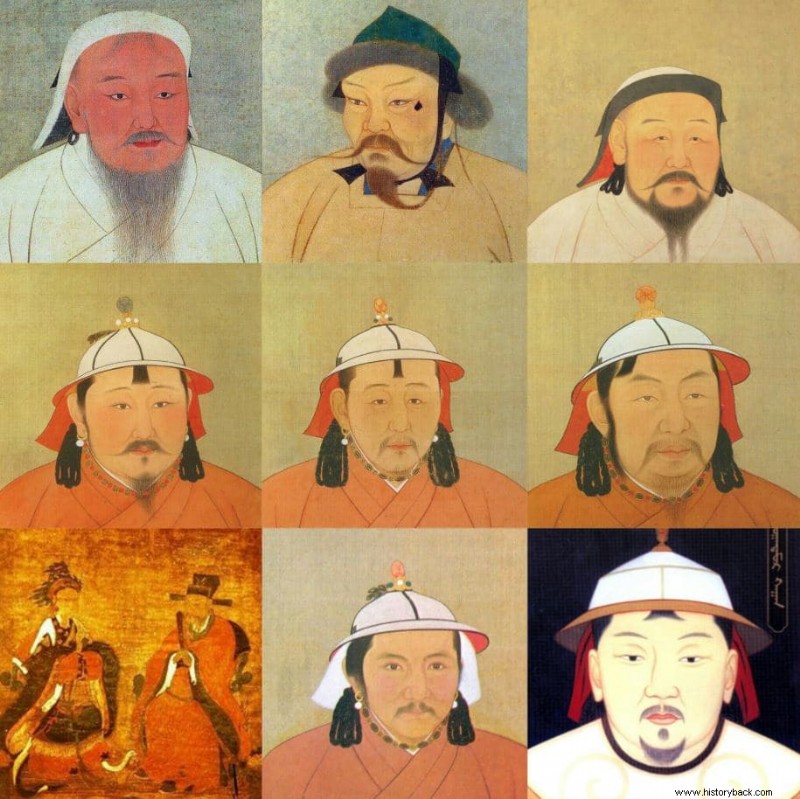The Mongol Empire was founded by Genghis Khan , born in 1162 with the name of Temujin .
The name of Genghis Khan it was given to him following his military exploits and following his election as king / supreme head of the Mongol clans ( Khan , in fact, it means supreme).
Thanks to his extraordinary military tactics, he managed to conquer a vast territory in a short time. In 1213 the Mongols they crossed the Great Wall and invaded the Jin empire to then conquer other territories one after the other.
The empire founded by Genghis Khan , at the moment of its maximum expansion, it came to occupy 22% of the world territory .

After his death in 1227 , the expansion continued for a short period of time, until arriving in Europe , that is up to Poland and to Hungary .
His son Ögödei Khan , had conquered much of Russia , conquered Hungary , won the battle against the Polish-German army and was already heading towards Vienna .
Europeans could feel lucky, because if Ögödei hadn't died suddenly before arriving in Vienna, Mongolian rule would probably have extended to Europe as well.
It should be added that in the medieval period, the Mongols , were often mistaken by Europeans for Tatars (or Tartars) who were an ethnic group of Turkish origin from Eastern Europe. Therefore, often, when the Tatars are mentioned in medieval historical sources , may not be Tatars , but precisely of the Mongols .
The territory of the empire was so vast that it had to be divided into so-called Khanati :
The Khanate of the Great Khan (China)
The Khanate of Chagatai (Turkestan)
The Ilkhan Khanate (Persia)
The Khanate of the Golden Horde (Russia)

On the Chinese territory of the Khanate of the Great Khan , in 1271 the Yuan dynasty was founded by the grandson of Genghis Khan , Kublai Khan . It reigned in China from 1279 to 1368 .
The Yuan dynasty it is very important and also quite recent, because it is the third last imperial dynasty in China .
It is followed by the Ming dynasty and later by the Qing dynasty , which ended in 1911 and after it the Republic of China was established .
The rulers of the empire:
- Genghis Khan (founder of the empire)
- Ögödei (Territorial expansion continued)
- Kublai Khan (First official emperor of the Yuan dynasty)
- Temur Khan
- Khayishan
- Ayurbarwada
- Shidibala
- Yesun Temur
- Tugh Temur
- Togon Temur (Last official emperor of the Yuan dynasty and first of the Northern Yuan dynasty)
- Ayushiridara (Emperor of the Northern Yuan)

The Yuan dynasty it was quite short, because the Chinese continued to oppose the rule of the descendants of the invaders who had subdued their country.
Between 1351 and 1368 there was a huge and bloody revolt of the population led by the followers of a Buddhist sect.
The revolt was called “ Revolt of the Red Turbans ”And overthrew the ruling dynasty in 1368 .
The dynasty did not completely disappear, because the last emperor Togon Temur , along with his son and successor Ayushiridara , moved to the north, on the original territory of the Mongols, where the remains of the Yuan dynasty they continued to exist under the name of Yuan north until the founding of the Qing dynasty in the 17th century
